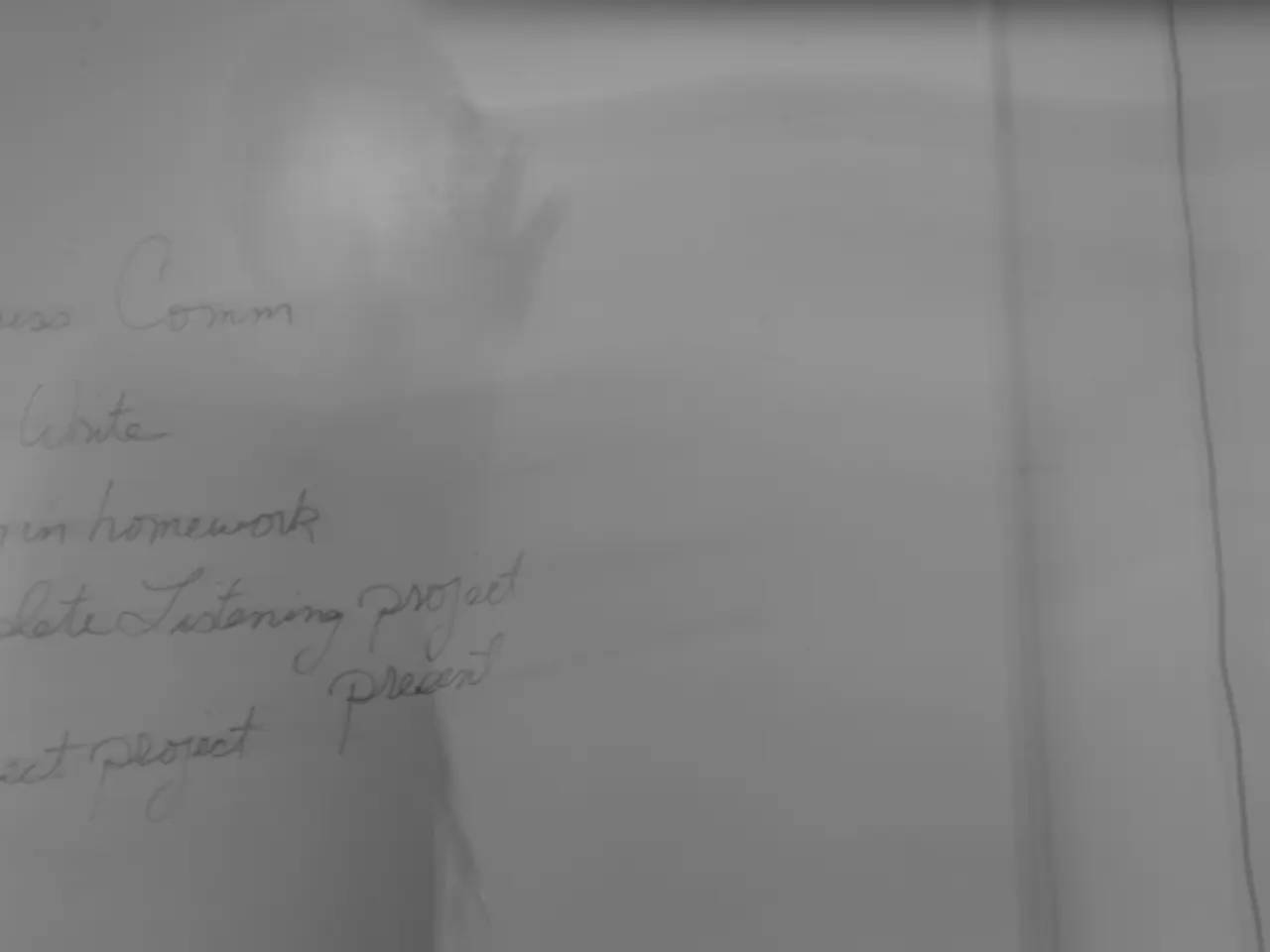U.S. Economic Trend: Insights on Stagflation and Potential Approach
The International Monetary Fund (IMF) has forecasted that core inflation will persist above the Federal Reserve's 2% target for some time, raising concerns about the potential return of stagflation in the United States.
In the second quarter of 2025, the GDP bounced back at a 3% annualized rate, following a contraction of -0.5% in the first. However, underlying demand is softening, and leading indicators suggest slowing momentum.
Inflation remains somewhat elevated, with consumer expectations around 3.0% over the next year. This is a concern, but it is far below the severe 9% inflation seen during the 1970s stagflation era. The Consumer Price Index rose by 2.7% in June 2025. Core inflation, which strips out volatile food and energy prices, is even higher at 2.9%.
The labor market indicators are weakening. The jobs growth is weaker than expected, raising warnings from economists that the labor market could deteriorate further. The firing of the Bureau of Labor Statistics (BLS) head by former President Trump after a weak job report has added political controversy but has not undermined the data's indication of a softening labor market.
The so-called "stagflation-lite" scenario describes the current state — simultaneous slower growth and elevated inflation, but not to extreme levels seen historically. Economic experts expect either inflation to rise further or growth to recover, preventing full stagflation.
Trump's administration's policies, particularly the tariffs and trade-related disruptions, have contributed to GDP fluctuations, including the large drag on net exports in early 2025, which has weighed on growth data. Trump's dismissal of the BLS official followed the report of weaker jobs numbers, with claims (without evidence) of politically motivated data manipulation, potentially shaking confidence in official statistics amid emerging stagflation fears.
Nobel-winning economist Paul Krugman believes the US is dangerously close to stagflation, primarily due to the economic policies, particularly those of former President Donald Trump. Krugman's belief is based on the fact that tariffs create a direct price shock in an economy where imports account for three times the share of GDP they did in 1930. The heart of stagflation is a Catch 22: the standard tools for fighting inflation can deepen stagnation, and the tools to spur growth can fuel inflation.
The situation merits close monitoring, especially of inflation trajectories and labor market health. While the economy has not stalled completely, 7 in 10 investors feel most stocks are overvalued and the economy is becoming "stagflationary". The term "stagflation" was coined in the 1960s and became well-known in the 1970s.
Trump's stepped-up deportations are shrinking the foreign-born workforce, disrupting labor-heavy sectors like agriculture and construction. Unemployment is currently 4.2%, significantly lower than the 9-10% joblessness seen in the late 1970s and early 1980s. Much of the growth in the second quarter came from investments in AI data centers.
In a recent post, Krugman wrote that the data are looking increasingly stagflationary. The current indicators of stagflation risk in the US economy show a mixed but cautious picture: inflation remains somewhat elevated and sticky, economic growth has slowed or is choppy, and labor market signs have weakened. These factors together increase concerns about stagflation but do not yet signal a full-blown recurrence like the 1970s.
[1] IMF forecasts core inflation to persist above the Federal Reserve's 2% target. (n.d.). Retrieved from https://www.imf.org/en/News/Articles/2025/06/28/01/59/35/imf-forecasts-core-inflation-to-persist-above-the-federal-reserves-2-target
[2] Trump fires Bureau of Labor Statistics chief after weaker-than-expected employment report. (2025, August 6). Retrieved from https://www.cnbc.com/2025/08/06/trump-fires-bureau-of-labor-statistics-chief-after-weaker-than-expected-employment-report.html
[3] GDP bounces back at 3% annualized rate in Q2 2025. (2025, July 29). Retrieved from https://www.bea.gov/newsreleases/national/gdp/gdpnewsrelease.htm
[4] Core inflation hits 2.9% in June 2025. (2025, July 16). Retrieved from https://www.bls.gov/news.release/cpi.nr0.htm
[5] CPI rises by 2.7% in June 2025. (2025, July 16). Retrieved from https://www.bls.gov/news.release/cpi.nr0.htm
- The IMF's forecast of persistent core inflation could impact the strategy of wealth-management firms, as they might need to adjust their investment portfolios.
- Understanding the potential return of stagflation requires a thorough study of economics and finance, making education-and-self-development a crucial aspect.
- As the economy faces the threat of stagflation, personal-finance experts advise individuals to diversify their investments, considering sectors that may prove resilient during economic downturns.
- In times of stagflation, the job market can be unstable, emphasizing the importance of career-development and job-search skills.
- Prolonged stagflation could potentially influence policy-and-legislation, as governments may need to enact measures to counteract the economic effects.
- Predictions of stagflation could lead to a shift in the focus of business and finance, as companies and investors may seek opportunities in less volatile sectors like car-accidents insurance, crime-and-justice services, and fire-prevention businesses.
- Stagflation can have far-reaching impacts, affecting sectors as diverse as general-news media outlets, as the public increasingly seeks insights into economic trends, and education providers, as students may reconsider their career choices.
- The loss of foreign workers due to strict immigration policies can disrupt various industries, requiring business leaders to consider alternative workforce strategies and skills-training programs.
- As stagflation concerns mount, politicians may need to address the issue, discussing it within the context of broader policy debates and potential reforms in war-and-conflicts, politics, and crime-and-justice.
- While economic indicators suggest slowing momentum, growth may still be possible through investments in innovative sectors such as sports technology, football data analysis, and American football analytics.
- In the Italian football league, Serie A, clubs might face economic challenges due to the prolonged stagflation, leading to potential team sales and management re-strategizing.
- In European leagues like the Champions League, Laliga, and the Premier League, clubs could face operational difficulties during stagflation, possibly leading to changes in the transfer market and club finance management.
- The NCAA Football sector could also experience repercussions from stagflation, as universities might need to review their athletic department budgets and financial strategies.
- As the NFL faces economic headwinds due to stagflation, team owners may need to reassess their marketing strategies, possibly focusing on cost-effective methods to attract fans and sponsors.
- In the midst of stagflation, one might find solace in the world of sports, following the progress of champions like Liverpool in the Premier League or the latest developments in the Champions League, serving as a welcome distraction from the economic uncertainties.




